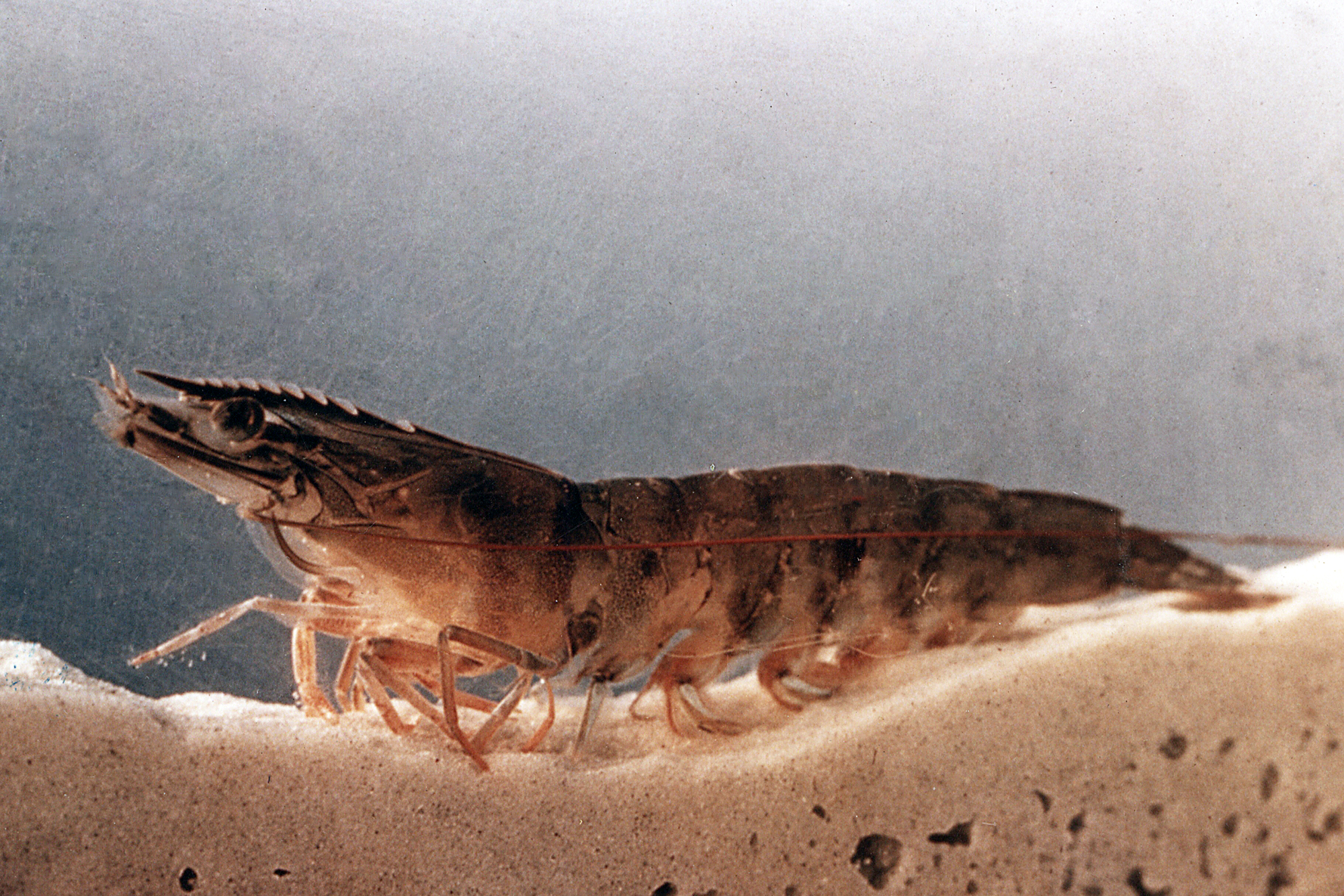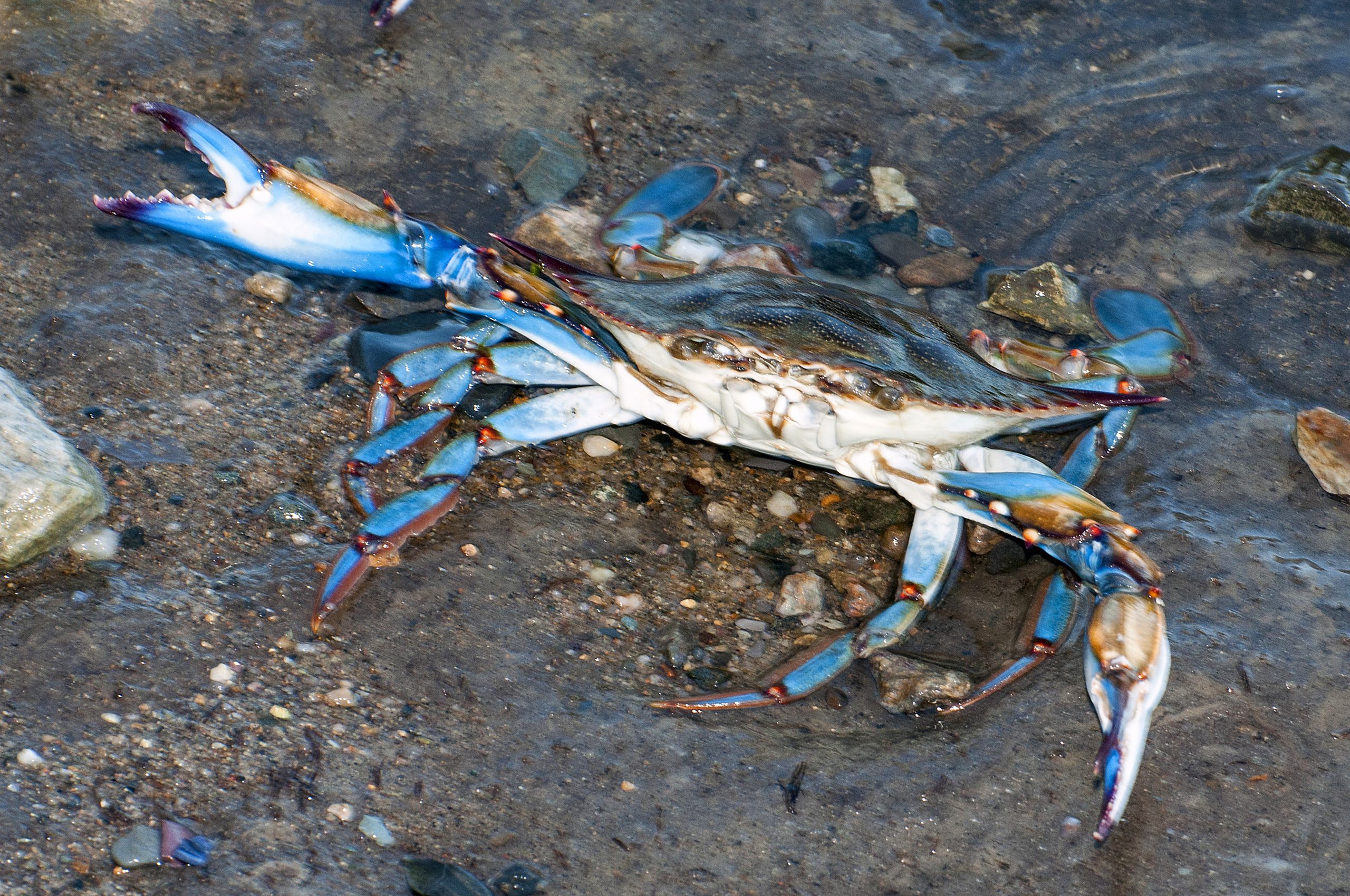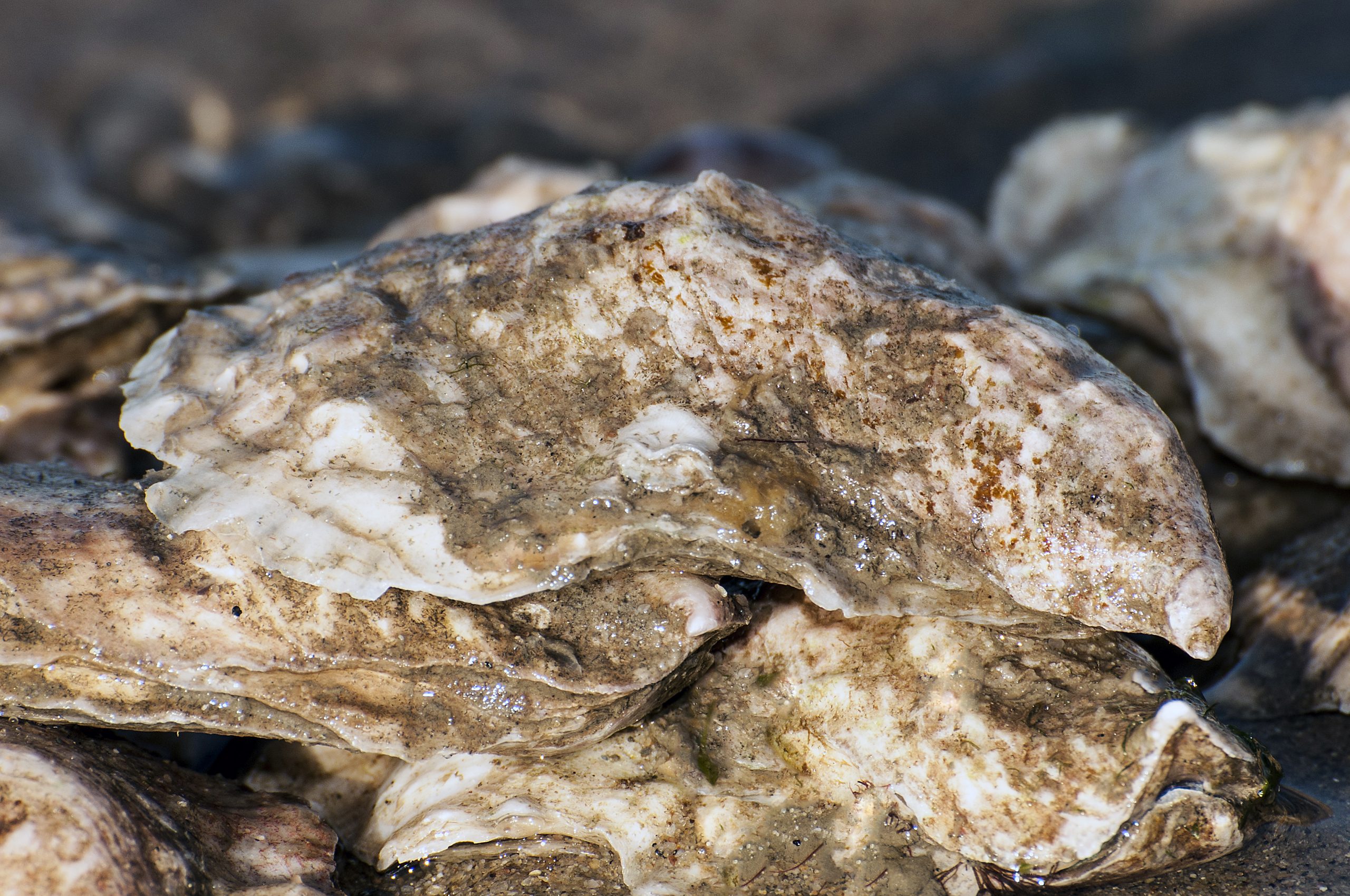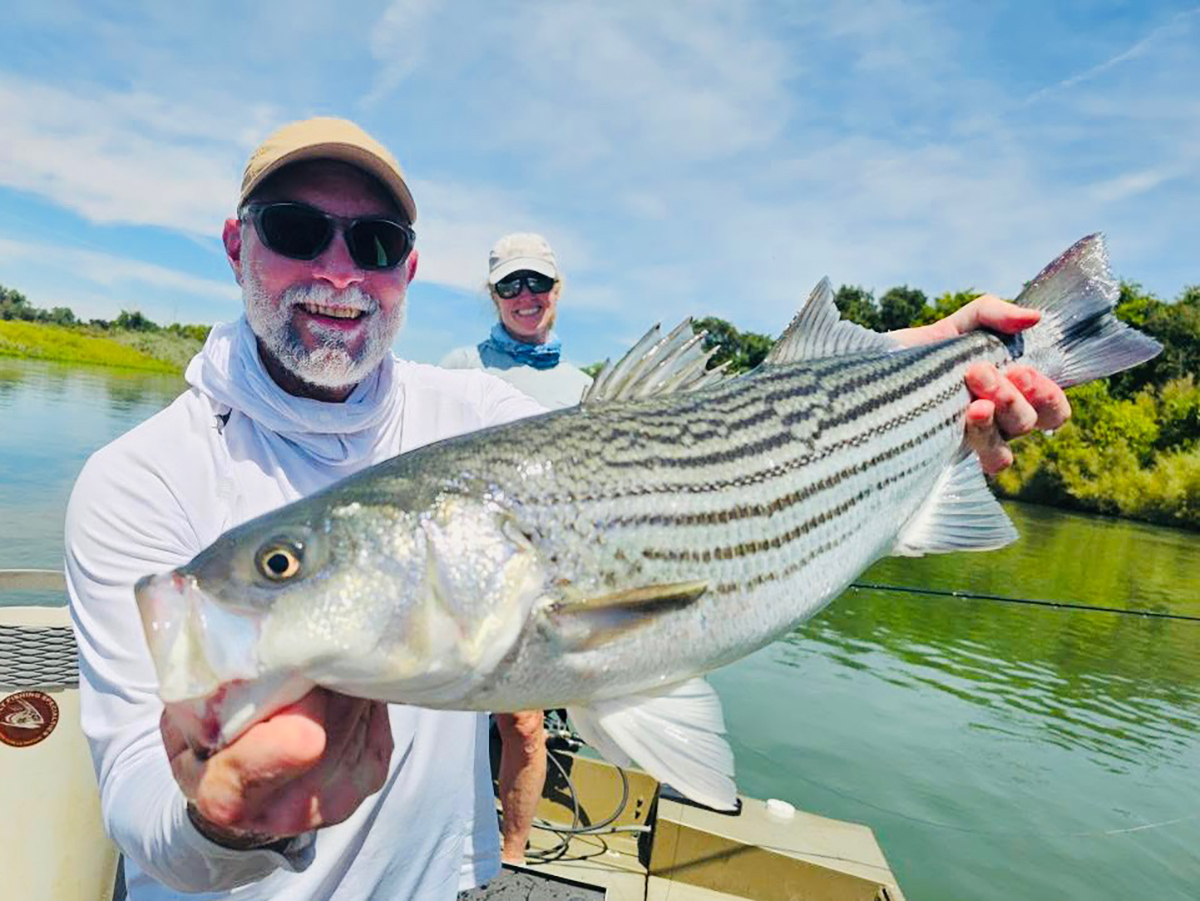
North Carolina is home to numerous species of crustaceans and shellfish, in many shapes, sizes and colors. This is our first installment in an in-depth look at some of the more popular and interesting animals in this category that call coastal North Carolina home.
Crustaceans and shellfish do not put up a fight to catch them like most fish species. You do not need an expensive rod, reel or lures and most of them stay in the same location year-round and do not leave North Carolina waters.
Supporter Spotlight
So, what is their appeal? Well, thoughts of clambakes, fried, baked, stuffed and pan-seared deliciousness all come to mind.
There are six species of crustaceans and shellfish that rank as the most important to this region: shrimp, blue crab, oyster, quahog or hard shell, bay scallop and spiny lobster.
Shrimp
“While there are multiple species of shrimp found in North Carolina, three primary shrimp species make up the shrimp industry. These include brown, white and pink shrimp. All three species use low salinity estuarine waters as nursery areas, thus, their growth and survival relies heavily on healthy estuaries,” said North Carolina Division of Marine Fisheries shrimp biologist, Chris Stewart.
Shrimp can grow doubling their size in a matter of weeks if conditions are ideal. As shrimp grow in size they migrate from the upper portions of the estuaries into the deeper saltier portions of rivers, and sounds, eventually returning to the ocean to spawn.
“Shrimp typically do not live very long. The maximum life expectancy of most shrimp is only about one to two years, depending on the species. Shrimp are considered an annual crop and their abundance is highly dependent on environmental conditions, particularly temperature and salinity. Both local and large-scale weather events, as well as climate change, can influence their abundance,” said Stewart.
Supporter Spotlight
He said that in recent years, milder winters have contributed to more abundant white shrimp in North Carolina. However, severe winters can kill overwintering white shrimp and lead to lower abundances.
“Excessive precipitation can also negatively impact shrimp, lowering salinities within the estuary, and slowing growth. Heavy rainfall associated with hurricanes and large fronts can also prematurely flush shrimp out of the upper portions of the estuaries,” Stewart said.
Locally caught shrimp are second only to blue crab in value to North Carolina fishermen. About 9.5 million pounds of shrimp were caught in the Tar Heel State during the 2019 fishing season, for worth $21.9 million. The majority of shrimp are caught by commercial shrimp trawls in rivers and sounds, but in recent years, ocean landings have increased by as much as 250%.
“Brown shrimp are primarily caught during summer months and are often referred to as ‘summer shrimp.’ While brown shrimp are caught throughout the state’s waters, the majority of their landings come from the Pamlico Sound and its adjacent waters. Brown shrimp are the fastest growing of the three species and can grow to be up to 9 inches in length. In 2019, brown shrimp only made up about 16% of the landings in 2019,” Stewart said.
White shrimp are caught by commercial and recreational fishermen throughout North Carolina’s estuarine waters during the fall, and in the ocean in the spring and winter. White shrimp spawn from March to November, peaking from April to October. During this period, trawlers will often target large gatherings of female, or “roe” white shrimp in the nearshore ocean waters, 1-3 miles off North Carolina.
“In recent years, white shrimp landings have increased substantially in the ocean during December and January, particularly off Cape Hatteras. Not only have white shrimp become more abundant due to rising water temperatures as the result of climate change, but the overall distribution of white shrimp appears to be expanding north as well,” said Stewart.
White shrimp are often referred to as “green tails” and can grow as large as 8 inches in length. In 2019, white shrimp contributed about 84% to North Carolina’s total shrimp landings.
“The third species of shrimp that is of lesser significance to commercial fishery landings are pink shrimp. This species is also known as spotted shrimp due to a dark spot usually found on its stomach,” Stewart said.
Pink shrimp spawn in the ocean from April to July, with post larvae being carried into the estuary by wind-driven currents from May through November. Pink shrimp will overwinter in North Carolina estuaries, burrowing into the bottom substrate until water temperatures rise in the spring, he said.
Pink shrimp can live up to 2 years and grow as large as 11 inches in length. Historically, pink shrimp made up about 30% of North Carolina’s shrimp landings, however, their contribution has significantly decreased since the 1990s. In 2019, pink shrimp accounted for less than 1% of North Carolina’s total shrimp harvest.

Blue Crab
The blue crab fishery is one of North Carolina’s most valuable, generating up to $100 million or more each year.
“This is a combination of dockside landings and products that are made from blue crab,” said Daniel Zapf, blue crab biologist with the North Carolina Division of Marine Fisheries. “The volume of blue crabs caught yields more pounds than any other fishery in the state.” Zapf said North Carolina has accounted for about 22% of the total annual Atlantic Coast blue crab landings since 1950, the third-highest state, after Virginia, and Maryland.
Here in North Carolina, blue crabs can be found in nearly all coastal waters, but the largest numbers are found in the Albemarle-Pamlico region. Commercial fishers caught more than 22 million pounds of blue crabs in 2019, with a landed value of $24 million.
Blue crabs begin their lives as larvae in the ocean and are transported by winds into estuaries, where they settle in seagrass beds. They grow quickly during their first summer and become mature at a year or two of age. Blue crabs spawn in the spring and summer in coastal inlets. Female blue crabs can spawn several times per season, releasing up to 3 million eggs.
“Blue crabs need to shed their shell in order to grow. As crabs lose their shell, they leave their old shells with a very thin, soft shell which begins to harden several days later. These softshell crabs are delicacies that are eagerly awaited by crab lovers each season,” said Zapf.
This process may be repeated up to 25 times during a crab’s life, and they seldom live longer than 2-3 years. When conditions are right, many crabs can be produced from a comparatively small number of spawning stock.
“Blue crabs are very easy to identify from all the other species found in local waters,” Zapf said. “They are in fact, blue in coloration. An adult male crab is called a ‘jimmy’ and can be identified by the almost iridescent blue shading on his shell and claws. Adult female blue crabs are called ‘sooks,’ or a ‘she-crab’ if not fully mature.”
Female crabs can be identified by the rounded, apron-shaped shells on their undersides and red tips on their claws, which are not blue as with the male. A “sponge crab” is a mature female carrying eggs on her underside.
New regulations to help manage and sustain the blue crab fishery in North Carolina waters went into effect on May 1, 2020. These measures to reduce harvest were deemed necessary after a recent North Carolina stock assessment determined the blue crabs were overfished and overfishing was still occurring. The term, “overfished,” according to the North Carolina Marine Fisheries, means the population is too small, and “overfishing” means the removal rate is too high.
“Some of the management measures include keeping the prohibition on harvesting immature female hard crabs statewide, prohibiting the harvest of dark sponge crabs in April, prohibiting the use of crab dredges and a 5-inch minimum size limit for mature female hard crabs statewide,” said Zapf.
The plan also establishes new — and adjusts existing — crab spawning sanctuaries, where it is unlawful to set or use trawls, pots and mechanical methods for oysters or clams, or take crabs with the use of commercial fishing equipment at certain times of the year.

Eastern oyster
The Eastern, or Virginia oyster is also an important shellfish in North Carolina waters. This species comes-in at third place in importance, commercially and economically, to the state.
“Native Eastern oysters can grow to be up to 8 inches in length as adults but are more often found at sizes between 3 and 5 inches in North Carolina. The shell, which is made of two separate halves, known as valves, are smooth along the edges and oval, or elongated in shape. The shell can range from an off-white to brownish coloration,” said Joe Facendola, North Carolina Division of Marine Fisheries oyster biologist.
Oysters are mollusks, and like scallops, mussels, and clams they are considered bivalves, with a shell that is hinged on one side and open on the other.
“Oysters begin their lives as small and free-swimming organisms, however, as they grow they need to find a suitable hard place to settle down and attach. Once they settle, they are unable to move from that spot. Often, they choose to settle on other living — or dead — oyster shells, and form large groups knowns as reefs. In North Carolina, oysters live and form reefs in both sub-tidal and intertidal habitat,” Facendola said.
“In good habitat, they can grow fast, and have the potential to be prolific reproducers. Each mature female can potentially generate over 100 million eggs during a spawning event,” he said.
Oysters are not only a delicious resource to be enjoyed raw, steamed, in chowders or stews and, especially in restaurants, on the half shell, but they are also a vital part of the ecosystem in coastal North Carolina.
The reefs that oysters form provide food and shelter to hundreds of other species, many of them also commercially and recreationally important to the state. Healthy oyster reefs also help North Carolina’s coastal communities by filtering the waters and providing shorelines protection from heavy waves and storms.
“The minimum size limit for both commercial and recreational harvest of oyster in North Carolina, is a shell length of 3 inches. Oysters grow at various rates in the different coastal waterbodies, but they typically reach this minimum size at 3 years of age,” said Facendola.
This species has been in decline for the past 100 years in local waters. Increased pressure from commercial and recreational fishing and downward trends attributed to disease, decreased water quality and loss of vital habitat has hurt what was an historically robust oyster fishery in North Carolina.
Oysters can be commercially and recreationally taken from Oct. 15 to March 31 with rakes, tongs or by hand, and they are also harvested commercially in shorter highly monitored dredge fisheries in sections of the Pamlico Sound, Facendola said.
The North Carolina Division of Marine Fisheries closely monitors water quality in the shellfish waters of the state and may issue temporary or permanent closures to the harvest of oysters and clams. Facendola recommends that anybody who is interested in harvesting oysters check the division website for the most current shellfish closures, as well as to access information on the division’s oyster rehabilitation efforts.
Next: Bivalves and other cool crustaceans in North Carolina waters.







